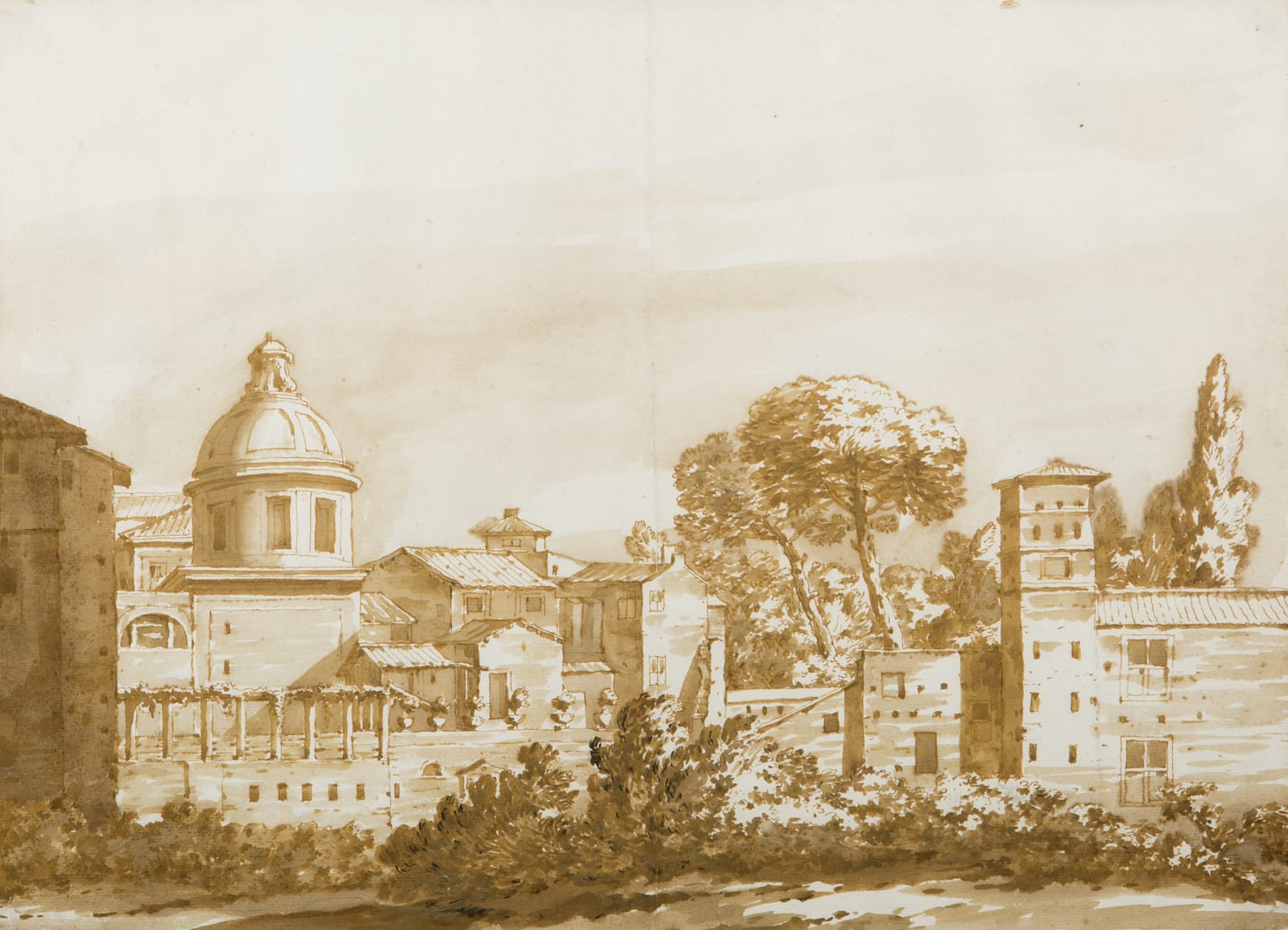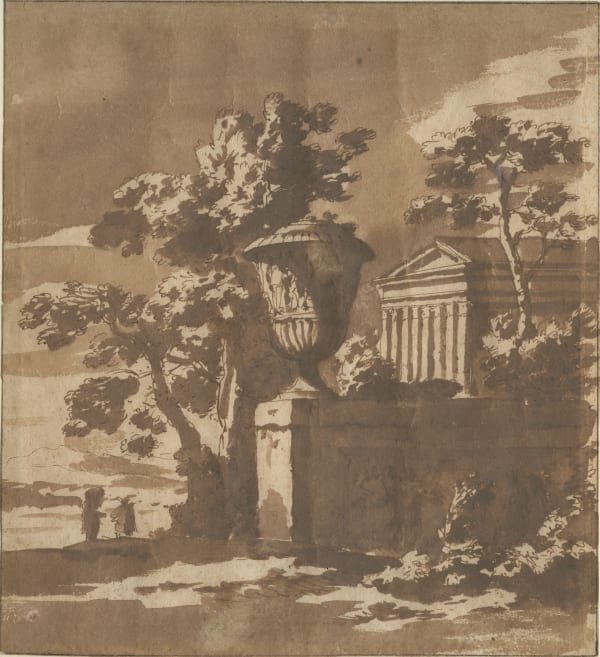Jacob van der Ulft (Gorinchem 1621 - 1689 Noordwijk)
Jacob van der Ulft was born in Gorinchem in 1621. He was trained primarily as a glass painter, but was also active as a painter, print artist and architect. It is not known who taught him; it is possible he was self-taught. He was greatly influenced by the work of Jan de Bisschop. In 1658 he made sketches of heraldic shields for the city of Gorinchem; in 1660 he became mayor of Gorinchem, like his father before him. He would remain in public service until 1679, when he briefly had to flee to The Hague following suspicions of corruption. In 1683 he moved to Noordwijk, where he remained until his death in 1689.
Although the contemporary art historian Arnold Houbraken wrote in his De groote schouburgh der Nederlantsche konstschilders en schilderessen that van der Ulft was the best glass painter in the Netherlands, today he is best known for his Italianate drawings depicting landscapes, cityscapes, ruins and port scenes. Usually executed, like the present work, in ink and washes, they are now much more appreciated than his relatively few surviving paintings.
Although there are many quite specific views of Rome by the hand of the artist, many of which are inscribed and dated, it remains unclear whether Jacob van der Ulft ever actually visited Italy. Houbraken states definitively that he did not, and claims that his Roman views were based on the work of other artists, presumably mostly prints. It is not known what, if any, location the present work depicts; however, it is a beautiful example of van der Ulft’s mature oeuvre.
Provenance
Private collection, Paris.
- X
- Tumblr
-
 Jacob van der Ulft (Gorinchem 1621 - 1689 Noordwijk)A Crowd of People outside a City Gatepen and brown ink, brush and brown wash on laid paper100 x 195 mmsigned and dated 'Jac : van der Ulf f :1680', upper right
Jacob van der Ulft (Gorinchem 1621 - 1689 Noordwijk)A Crowd of People outside a City Gatepen and brown ink, brush and brown wash on laid paper100 x 195 mmsigned and dated 'Jac : van der Ulf f :1680', upper right -
 Jacob van der Ulft (Gorinchem 1621 - 1689 Noordwijk)An Italianate Landscape with a Templepen and ink, brush and wash on laid paper195 x 175 mm
Jacob van der Ulft (Gorinchem 1621 - 1689 Noordwijk)An Italianate Landscape with a Templepen and ink, brush and wash on laid paper195 x 175 mm


